Address
304 North Cardinal
St. Dorchester Center, MA 02124
Work Hours
Monday to Friday: 7AM - 7PM
Weekend: 10AM - 5PM
Address
304 North Cardinal
St. Dorchester Center, MA 02124
Work Hours
Monday to Friday: 7AM - 7PM
Weekend: 10AM - 5PM
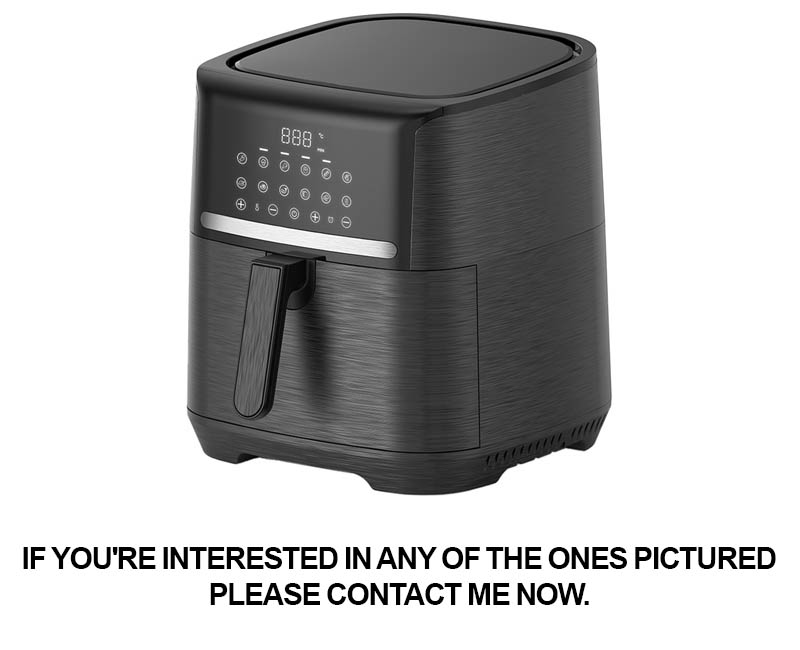
In a world where culinary trends are constantly evolving, the commercial air fryer industry has surged to the forefront, offering innovative solutions for healthier and more efficient cooking. As we delve into the latest advancements and market dynamics, it’s clear that the future of commercial air fryers is shaping up to be both exciting and transformative.
The commercial air fryer has emerged as a revolutionary force in the kitchen appliance market, transforming the way we think about cooking and healthy eating. Once a niche product, these fryers have now become a staple in many commercial kitchens, from restaurants to catering services and even in some home kitchens. But what has driven this surge in popularity, and what does it mean for the future of cooking?
Once confined to the realms of deep-frying, the concept of air frying has expanded to offer a healthier alternative to traditional frying methods. By using hot air to circulate around the food, air fryers reduce the amount of oil needed, leading to lower calorie content and less fat. This innovation has not only caught the attention of health-conscious consumers but has also resonated with chefs looking to offer lighter, yet satisfying dishes.
In the past few years, commercial air fryer factories have seen a significant increase in demand, as businesses realize the benefits of incorporating these appliances into their operations. The ability to produce crispy, golden fried foods with minimal oil has opened up new possibilities for menu creation. Chefs are now able to offer a wider range of fried items, from crispy French fries to tempura vegetables, without compromising on taste or texture.
The convenience factor cannot be overlooked either. Commercial air fryers are designed to be efficient, with rapid heating and short cooking times. This not only saves on energy but also reduces the labor required in the kitchen. For busy restaurants and food service operations, this efficiency is a game-changer, allowing for more orders to be processed in less time.
As the market for commercial air fryers has grown, so too has the competition. Leading factories have been racing to innovate, introducing new features and technologies that enhance the performance and versatility of their products. Some models now come with adjustable temperature controls, allowing for a wider range of cooking methods, from baking to roasting. Others are equipped with digital interfaces that provide precise cooking times and temperatures, making it easier for chefs to achieve consistent results.
The trend towards healthier eating has been a significant driver in the rise of commercial air fryers. With the public’s growing awareness of the health risks associated with excessive oil consumption, air fryers offer a solution that satisfies the craving for fried foods without the guilt. This shift has also prompted the development of new recipes and cooking techniques that can be achieved using an air fryer, expanding the culinary horizons of both chefs and consumers.
Another factor contributing to the popularity of commercial air fryers is their adaptability. These appliances can be used in a variety of settings, from fast-food outlets to gourmet restaurants. Their compact size and ease of use make them a practical choice for any kitchen, regardless of its size or layout.
In addition to the benefits they offer to consumers and businesses, commercial air fryers have also become a point of differentiation for many food service operators. By offering a unique and health-forward option, restaurants can attract health-conscious customers and stand out in a crowded market.
The environmental impact of cooking methods has also played a role in the rise of commercial air fryers. As more businesses seek to reduce their carbon footprint, air fryers provide a greener alternative to traditional deep-frying. They consume less energy and produce fewer emissions, making them a more sustainable choice for the planet.
As we look to the future, it’s clear that the commercial air fryer is here to stay. With ongoing innovation and technological advancements, these appliances are poised to become even more integral to the kitchen landscape. The possibilities are endless, from the development of new materials that increase efficiency to the integration of smart technology that allows for remote monitoring and control.
In conclusion, the rise of commercial air fryers has been a multifaceted phenomenon, driven by a combination of health trends, technological advancements, and environmental concerns. As these appliances continue to evolve, they will undoubtedly play a significant role in shaping the future of commercial cooking.

In the ever-evolving landscape of kitchen appliances, commercial air fryers have emerged as a revolutionary trend. To gain a deeper understanding of this market shift, we visited a leading commercial air fryer factory, where we were able to glean valuable insights into the dynamics at play.
The factory’s production line was a testament to the demand for these appliances. With a steady stream of units being assembled, it was clear that commercial air fryers are not just a fleeting trend but a staple in modern kitchens. We observed a meticulous process, from the sourcing of high-quality components to the final quality checks, ensuring that each unit meets the stringent standards required for commercial use.
One of the key factors driving the market’s interest in commercial air fryers is their health benefits. As consumers become more health-conscious, the allure of fried foods with significantly less oil is hard to resist. The factory’s engineers have optimized the air frying process to achieve a crispy texture without the guilt, making these appliances a hit in restaurants and commercial settings.
We were impressed by the factory’s commitment to innovation. New models are constantly being developed, each with unique features that cater to different market segments. For instance, some units are designed with larger capacities to handle high-volume orders, while others come with advanced temperature control systems to ensure consistency across batches.
The market dynamics also reflect a shift towards sustainability. The factory has integrated eco-friendly practices into its operations, from energy-efficient manufacturing processes to the use of recyclable materials. This not only appeals to environmentally conscious businesses but also aligns with the broader trend of corporate social responsibility.
Another interesting observation was the customization options available. Businesses can choose from a variety of sizes, colors, and even add their own branding to the appliances. This level of personalization caters to the diverse needs of different establishments, from small cafes to large-scale food service operations.
The factory’s sales team provided us with data-driven insights into the market trends. They highlighted the growing demand for countertop models, which are becoming increasingly popular in smaller establishments due to their compact size and ease of use. Additionally, there’s a surge in interest from health-focused chains that are looking to offer customers a healthier alternative to traditional fried foods.
We also learned about the importance of after-sales service in this market. The factory offers comprehensive support, including training for staff and maintenance services, which is crucial for ensuring that businesses can maximize the efficiency and longevity of their air fryers.
The factory’s focus on research and development is evident in its continuous improvement of existing models and the creation of entirely new products. This forward-thinking approach ensures that the factory stays ahead of the curve, providing solutions that meet the changing needs of the market.
In conclusion, the insights we gathered from the leading commercial air fryer factory underscored the dynamic nature of the market. With a focus on health, innovation, sustainability, and customer satisfaction, commercial air fryers are poised to remain a key player in the kitchen appliances industry.
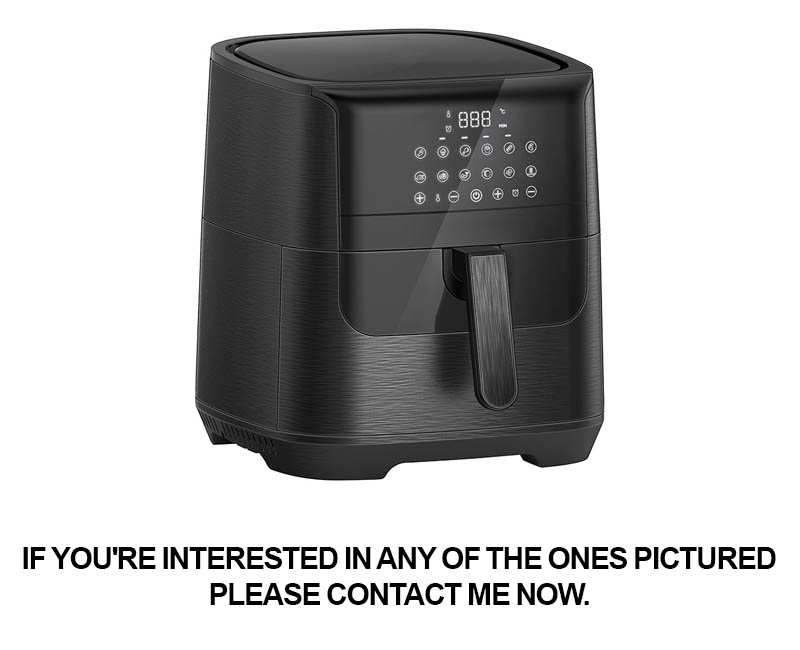
In the ever-evolving world of commercial kitchen appliances, the design of air fryers has undergone a remarkable transformation. These innovations aren’t just about aesthetics; they’re about functionality, efficiency, and user experience. Let’s dive into some of the latest advancements shaping the commercial air fryer technology landscape.
The integration of smart technology has revolutionized the way commercial air fryers operate. With features like touch screen interfaces, these modern fryers offer intuitive controls that simplify the cooking process. Users can now program specific temperatures and cooking times, ensuring consistency across batches, which is crucial for maintaining quality in a commercial setting.
One of the standout innovations is the inclusion of self-cleaning functions. Traditional deep fryers require meticulous cleaning after each use, but modern commercial air fryers can reduce this labor-intensive task to a mere touch of a button. This not only saves time but also reduces the risk of cross-contamination, making them a favorite among health-conscious establishments.
Energy efficiency has become a cornerstone in the design of new commercial air fryers. Advanced heating elements and insulation technologies have been developed to ensure that these fryers use less energy while maintaining high cooking temperatures. This not only cuts down on operational costs but also aligns with the growing demand for eco-friendly kitchen solutions.
The size and capacity of commercial air fryers have also seen significant improvements. Newer models are designed to be more compact, allowing for efficient use of space in busy kitchens. Yet, they come with larger capacities, making them ideal for high-volume operations such as restaurants, catering services, and fast-food chains.
Safety features have been enhanced with the latest designs. Many commercial air fryers now come with automatic shut-off functions, preventing overheating and potential fires. Additionally, some models include child safety locks and non-slip bases to protect both the appliance and the kitchen staff.
The ability to cook a variety of foods is a key aspect of modern commercial air fryers. Innovations in design now include adjustable heat settings and different cooking modes, such as “crispy” or “slow cook,” allowing for a wide range of recipes from crispy French fries to tender chicken wings. This versatility is essential for businesses looking to offer diverse menu items.
In terms of material, there’s a shift towards using more durable and easy-to-clean components. The interiors of these fryers are often made from stainless steel, which is not only robust but also resistant to corrosion and easy to sanitize. The exteriors, too, are designed with sleeker lines and more durable finishes to withstand the demands of a commercial kitchen environment.
The incorporation of filters and exhaust systems has also become a standard in commercial air fryer design. These systems help in reducing smoke and odors, ensuring that the air quality in the kitchen remains high. This is particularly important in kitchens where air quality can be compromised due to the cooking process.
Lastly, the user interface has been reimagined to be more accessible and user-friendly. From clear digital displays to voice-controlled operations, the latest commercial air fryers are designed to be understood and operated by anyone, regardless of their technical expertise.
In conclusion, the design of commercial air fryers has reached new heights, with innovations that not only make them more efficient and user-friendly but also safer and more sustainable. As the demand for healthier and faster cooking methods continues to grow, these advancements are paving the way for a new era in commercial kitchen technology.
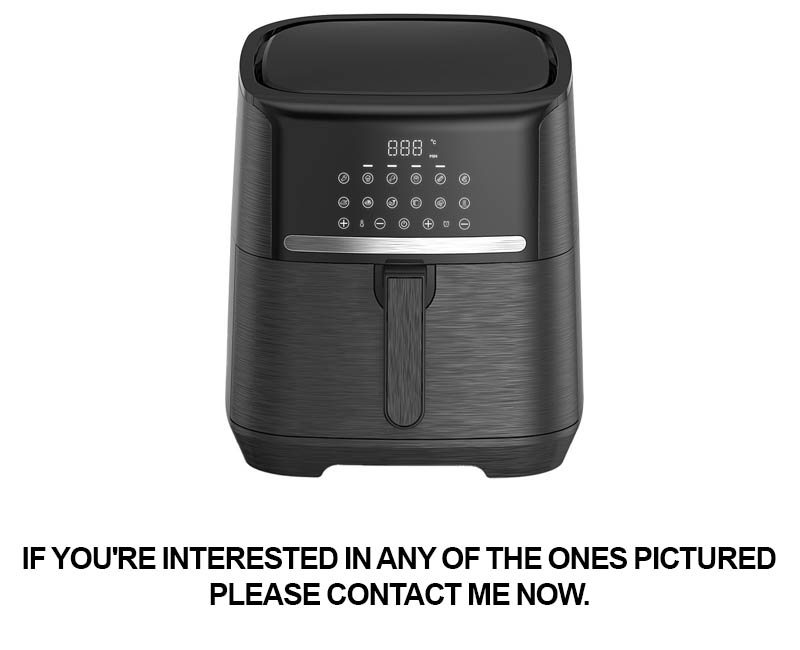
Air frying has emerged as a revolutionary cooking method that combines health benefits with efficiency. This section delves into the science that makes air frying not just a trend, but a game-changer in the culinary world.
The Science of ConvectionAt the heart of air frying lies the principle of convection. Unlike traditional frying, which involves submerging food in a pool of oil, air frying uses a high-speed fan to circulate hot air around the food. This process ensures that the food cooks evenly, with a crispy exterior and a tender interior. The fan’s rapid movement creates a gentle breeze that keeps the food moving, which prevents sticking and overcooking.
Hot Air CirculationThe key to air frying’s success is the precise control of air temperature and flow. Modern commercial air fryers can reach temperatures up to 400°F (200°C), which is high enough to caramelize sugars and create a golden, crispy texture on the surface of the food. The hot air circulates at a rate that ensures every morsel is exposed to the same heat, leading to a consistent and delicious outcome.
Reduced Oil UsageOne of the most appealing aspects of air frying is the significantly lower oil content compared to traditional frying methods. While traditional frying can involve using up to 3-4 tablespoons of oil per serving, air fryers typically use just a tablespoon or less. This reduction in oil not only cuts down on calories but also minimizes the risk of heart disease and other health issues associated with excessive oil consumption.
The Maillard ReactionThe Maillard reaction is a chemical process that occurs when amino acids and sugars in food are heated. This reaction is responsible for the rich, brown color and delicious flavor that we associate with fried and roasted foods. In air frying, the high heat and the constant movement of hot air around the food facilitate this reaction, resulting in a naturally flavorful and appetizing finish without the need for additional fats.
Maintaining Nutritional ValueCooking methods that require high heat and long cooking times can often lead to the loss of nutritional value in food. However, air frying’s rapid cooking time (usually between 5 to 15 minutes) helps to preserve more of the vitamins and minerals found in the ingredients. This is particularly beneficial for vegetables, which can retain up to 90% of their nutrients when cooked using an air fryer.
Health BenefitsThe combination of reduced oil usage and the ability to cook at high temperatures without excessive heat means that air frying is a healthier option for those looking to maintain a balanced diet. It’s ideal for individuals with dietary restrictions, such as those following a low-carb, low-fat, or gluten-free lifestyle. Additionally, the ability to cook a variety of foods, from meats and fish to vegetables and desserts, makes air frying a versatile and health-conscious choice for any kitchen.
Efficiency and ConvenienceBeyond health benefits, air frying is a highly efficient method that saves both time and energy. With shorter cooking times and the ability to cook multiple items at once, it’s a convenient solution for busy households and commercial kitchens alike. The compact size of air fryers also means they can be easily stored, making them a space-saving addition to any kitchen.
Innovation in Temperature ControlModern commercial air fryers have advanced temperature control systems that allow for precise adjustments. This feature is crucial for achieving the perfect texture and flavor in different types of foods. For instance, delicate vegetables may require a lower temperature to prevent burning, while meats like chicken and fish benefit from higher temperatures to ensure a thorough cook.
The Role of Non-Stick CoatingsNon-stick coatings on the interior of air fryers are essential for ease of use and to prevent food from sticking. These coatings are designed to withstand high temperatures and provide a smooth surface that makes cleaning the air fryer a breeze. However, it’s important to follow manufacturer guidelines to ensure the longevity of the non-stick surface.
In conclusion, the science behind air frying is a marvel of culinary engineering. It offers a healthier, more efficient, and versatile way to cook that is quickly becoming a staple in kitchens around the world. As technology continues to evolve, we can expect even more innovative features that make air frying an even more appealing option for both health-conscious consumers and busy chefs.
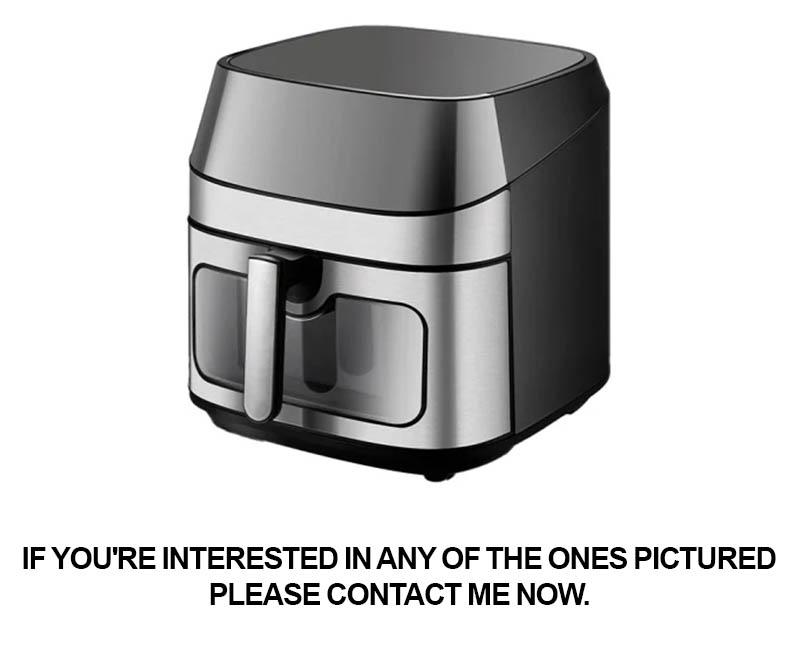
The commercial air fryer industry has been buzzing with innovation and consumer demand, and it’s clear that certain trends are shaping the market. Here’s a glimpse into what’s hot in this dynamic sector:
Health and Wellness FocusConsumers are increasingly seeking healthier alternatives to traditional cooking methods, and commercial air fryers are stepping up to the plate. With their ability to cook with little to no oil, these appliances are appealing to health-conscious customers looking to reduce their fat intake.
Compact and Portable DesignsIn the fast-paced world we live in, convenience is king. Many commercial air fryer models are now designed to be compact and portable, making them perfect for busy kitchens, food trucks, and even as a travel companion for those who love to cook on the go.
Smart Technology IntegrationAs with other kitchen appliances, the integration of smart technology is becoming a key feature in commercial air fryers. Users can now control their fryers through smartphone apps, receive notifications about cooking progress, and even program settings for automated cooking times and temperatures.
Versatility in Cooking OptionsOnce limited to fried foods, commercial air fryers have expanded their capabilities. Modern models can now bake, roast, grill, and even dehydrate, offering a versatile cooking experience that can replace several appliances in a commercial kitchen.
Energy EfficiencyCommercial kitchens are always on the lookout for ways to reduce energy costs. The air fryer’s ability to circulate hot air around food, resulting in a crispy outer layer while retaining moisture inside, makes it an energy-efficient choice compared to traditional deep fryers.
Customization and Customizable SettingsManufacturers are responding to the need for customization by offering air fryers with adjustable settings. This allows chefs and kitchen staff to tailor cooking times and temperatures to the specific requirements of their recipes, ensuring consistent and high-quality results.
Eco-Friendly MaterialsWith environmental concerns at the forefront, there’s a growing trend towards using eco-friendly materials in the construction of commercial air fryers. Recyclable plastics, sustainable woods, and other green materials are becoming more common, appealing to businesses looking to reduce their carbon footprint.
Enhanced Capacity and EfficiencyCommercial air fryers are now available in a range of sizes, from countertop models suitable for small establishments to larger units that can cater to high-volume operations. These larger fryers often come with multiple baskets or trays, allowing for batch cooking and increased efficiency.
Safety FeaturesSafety is a top priority in commercial kitchens, and air fryers are no exception. Modern fryers come with features like automatic shut-off, overheat protection, and cool-touch exteriors to prevent accidents and ensure a safe cooking environment.
Increased Focus on Food QualityAs the market matures, there’s a growing emphasis on the quality of the food produced by air fryers. Manufacturers are investing in research and development to improve the taste and texture of air-fried foods, making them indistinguishable from deep-fried counterparts.
Expansion into New MarketsThe commercial air fryer industry is not confined to fast-food chains and casual dining establishments. There’s a surge of interest from gourmet restaurants, health food cafes, and even upscale hotels, as these venues seek to offer unique and healthful options to their patrons.
Collaborations and PartnershipsTo stay ahead in the competitive landscape, manufacturers are forming collaborations with chefs, food scientists, and even tech companies. These partnerships aim to drive innovation and ensure that the products hitting the market are not only cutting-edge but also meet the evolving needs of the industry.
The commercial air fryer industry is a fast-evolving sector, with a host of trends pushing the boundaries of what these appliances can do. From health and convenience to technology and sustainability, the market is heating up with exciting possibilities.
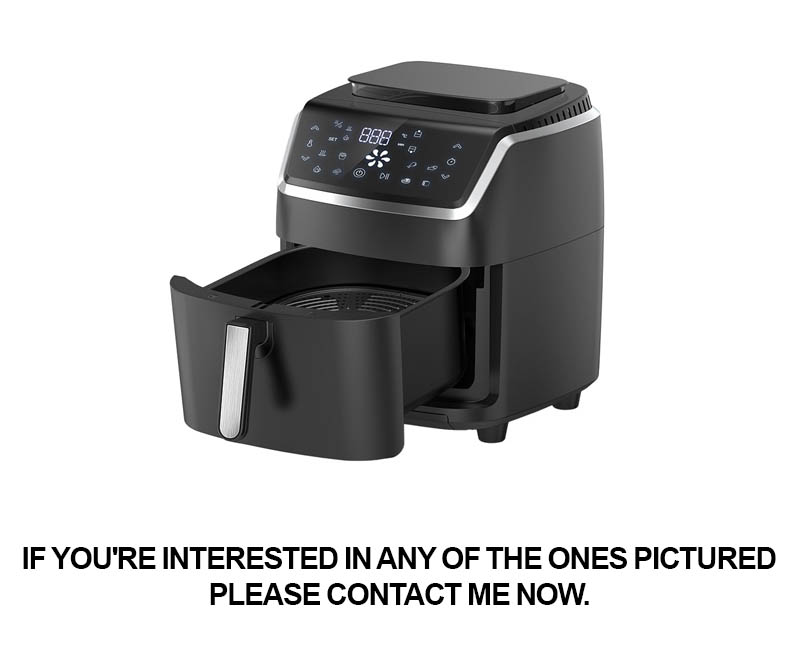
In the realm of commercial air fryer manufacturing, data-driven decisions are the backbone of our product development process. By harnessing industry analytics, we’ve been able to refine our offerings, ensuring they not only meet but exceed market expectations. Here’s a glimpse into how these insights shape our product line:
Our team meticulously tracks consumer preferences and market demands, uncovering trends that are shaping the industry. From the popularity of healthier cooking methods to the desire for convenience, these data points guide our design and innovation efforts.
The analytics we gather reveal that energy efficiency is a key concern for many businesses. By analyzing the energy consumption of various models, we’ve optimized our air fryers to offer superior performance with minimal energy use, making them both cost-effective and environmentally friendly.
Customer feedback is a treasure trove of information for us. We use sentiment analysis to understand what users love about our products and what they wish to see improved. This feedback loop ensures that every new feature or design tweak is based on real-world usage and satisfaction.
Market research indicates a growing trend towards compact and multi-functional appliances. Our product line now includes air fryers that can serve dual purposes, such as toasting or dehydrating, all while maintaining the signature crispy texture that air frying is known for.
The data also highlights the importance of user interface design. We’ve invested in intuitive controls and digital displays that make our air fryers not just efficient but also user-friendly, catering to a broad range of users from novices to seasoned chefs.
In the pursuit of health and wellness, we’ve seen a surge in demand for air fryers that can accommodate larger batches of food. Our analytics have shown that businesses need appliances that can handle commercial volumes without compromising on quality, leading us to develop models with larger baskets and increased cooking capacity.
Another trend we’ve identified is the need for customization. By integrating adjustable temperature controls and timer settings, we’ve given our customers the ability to tailor their cooking experience to specific ingredients and desired outcomes.
Safety is paramount in any kitchen appliance, and our industry analytics have shown that users are looking for air fryers with advanced safety features. We’ve incorporated features like automatic shut-off and overheat protection to ensure that our products are reliable and secure.
The rise of online shopping has also influenced our product line. We’ve optimized our air fryers for online visibility, focusing on clear product descriptions, high-quality images, and detailed specifications that resonate with the online consumer.
Lastly, we’ve noticed a trend towards sustainability, with businesses seeking out eco-friendly appliances. Our factory has responded by sourcing materials that are recyclable and implementing manufacturing processes that reduce waste and energy consumption.
In summary, the commercial air fryer industry is dynamic, and our product line evolves in response to these market trends. By staying attuned to the data and insights provided by industry analytics, we continue to innovate and offer solutions that cater to the ever-changing needs of our customers.
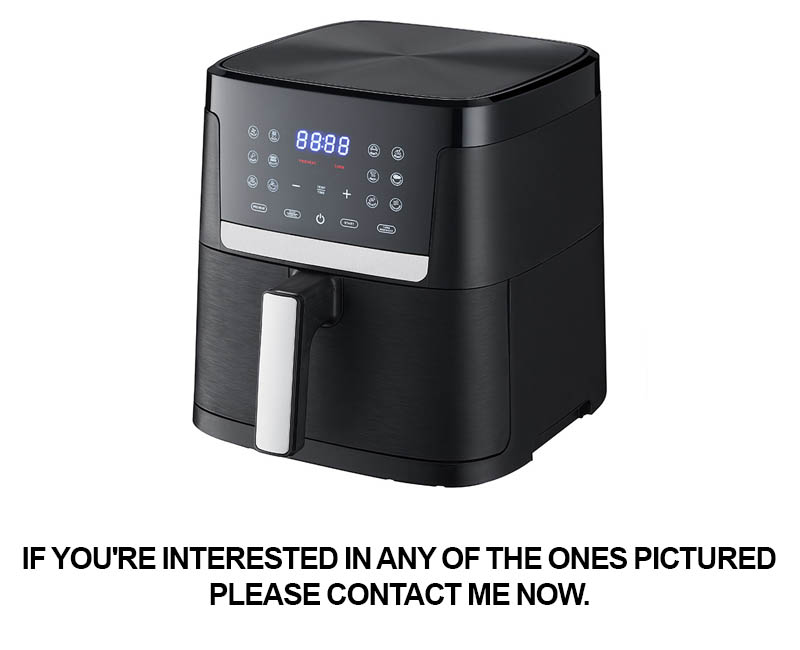
In our pursuit of excellence, sustainability has become a cornerstone of our operations. Our factory has embraced eco-friendly practices that not only reduce our environmental footprint but also enhance our reputation in the market. Here’s a glimpse into how we’ve integrated sustainability into the heart of our manufacturing process.
Our commitment to sustainability starts with the sourcing of raw materials. We’ve established partnerships with suppliers who prioritize sustainable farming and harvesting practices. This ensures that the ingredients we use are not only of high quality but also come from sources that are mindful of ecological balance.
Energy efficiency is paramount in our factory. We’ve invested in state-of-the-art equipment that consumes less energy, reducing our overall power consumption. LED lighting has replaced traditional bulbs, and our machinery is designed to operate at optimal efficiency, minimizing waste and energy loss.
Water conservation is another critical aspect of our sustainability strategy. We’ve implemented water recycling systems that capture and treat wastewater, which is then reused in non-potable applications. Our factory has also reduced water usage through the installation of low-flow faucets and fixtures.
Waste management is a key focus area. We’ve implemented a comprehensive recycling program that segregates recyclables from non-recyclables. This includes separating plastic, metal, and paper waste, which is then processed and repurposed. Our factory also composts organic waste, turning it into nutrient-rich soil for local agriculture.
In the realm of emissions, we’ve taken steps to minimize our contribution to air pollution. Our factory uses clean energy sources, such as solar panels and wind turbines, to power our operations. This renewable energy not only reduces our carbon footprint but also demonstrates our commitment to clean technology.
Our employees are at the heart of our sustainability efforts. We provide regular training on eco-friendly practices, encouraging everyone to contribute to our environmental goals. This includes initiatives like carpooling, using public transportation, and reducing paper usage through digital documentation.
The impact of our sustainability practices is not just internal; it extends to our customers and the broader community. We offer products that are designed to be energy-efficient and long-lasting, reducing the need for frequent replacements and the subsequent waste generated by discarded appliances.
Our factory’s design itself reflects our dedication to sustainability. We’ve utilized natural ventilation and daylighting to reduce the need for artificial lighting and air conditioning. This not only creates a healthier work environment but also conserves energy.
We’ve also taken a proactive approach to sustainability by participating in and leading industry initiatives. Our commitment to eco-friendly practices has been recognized by various certifications and awards, which we proudly display in our factory.
The long-term benefits of our sustainability efforts are clear. By reducing our environmental impact, we’re not only contributing to a healthier planet but also improving our operational efficiency and cost-effectiveness. This, in turn, enhances our competitive edge in the market.
Our focus on sustainability is an ongoing journey. We continuously seek innovative ways to improve our practices, stay ahead of regulatory changes, and adapt to new technologies that can further reduce our ecological footprint. As we evolve, we remain steadfast in our commitment to eco-friendly operations, ensuring that our factory remains a beacon of sustainability in the commercial air fryer industry.
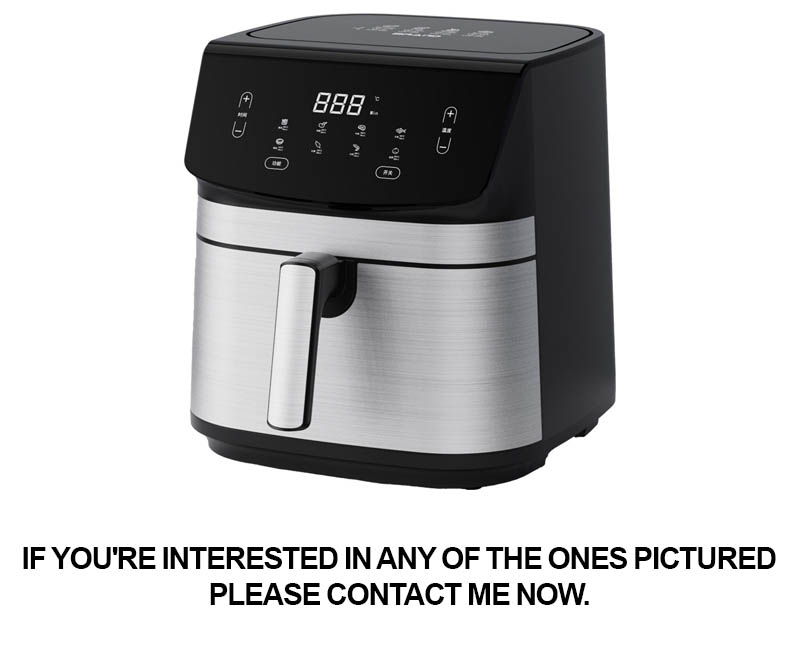
In the bustling streets of New York, there’s a small, family-owned restaurant that swapped out its traditional fryers for our commercial air fryers. The transformation wasn’t just about modernizing the kitchen—it was a game-changer for their menu and health-conscious diners. Their signature fries, once deep-fried and greasy, now boast a golden crunch and a fraction of the calories, all while maintaining their flavor profile. The customers have taken notice, and the restaurant’s popularity has soared as a result.
Across the pond in London, a café that prides itself on serving quick, on-the-go breakfasts now serves a crowd-pleasing avocado toast with a twist. The café owners had been looking for a way to offer a healthier alternative to their fried bacon. Our air fryers were the perfect solution, cooking the bacon to a crisp with a significantly lower oil content. The result is a more sustainable and appetizing option that has become a staple on their menu.
In the heart of Los Angeles, a gourmet burger joint that once faced a dilemma over serving high-quality burgers with minimal oil was saved by our commercial air fryers. The burger patties, traditionally grilled, are now cooked to perfection with the aid of hot air. The process reduces the need for butter or oil, leading to a leaner yet just-as-delicious product. The positive feedback from health-conscious patrons has been overwhelming, and the restaurant’s reputation for quality has only grown stronger.
A small but vibrant Italian pizzeria in Sydney found itself in a predicament. They wanted to offer a variety of crispy appetizers, but the deep-frying method was both unhealthy and environmentally unfriendly. The introduction of our air fryers was a turning point. The pizzeria now serves crispy calamari and vegetable sticks with a guilt-free twist. The air fryers not only save oil but also maintain the texture and taste of fried food without the heavy feeling of grease.
A busy café in Berlin, known for its organic and vegan offerings, was eager to expand its menu but had concerns about the environmental impact of traditional cooking methods. They decided to switch to our air fryers, which use up to 80% less oil than deep-frying. This switch was not only a hit with the eco-conscious crowd but also with those looking for a healthy, tasty snack. The café now boasts a variety of air-fried treats, from tofu “chicken” fingers to sweet potato fries.
A bustling food court in Singapore had long relied on traditional fryers to offer its visitors a selection of fast-food options. But the time came when the operators realized the need for a healthier approach. By adopting our air fryers, they were able to introduce new items to their menu, such as chicken wings with a unique marination that requires no extra oil, and even an air-fried chicken fillet sandwich. The new items have been a hit, and the food court has gained a reputation for innovative, health-forward options.
A well-known Mexican restaurant chain in San Francisco was looking to diversify its menu and attract more health-conscious customers. After a thorough evaluation, they decided to invest in our air fryers to cook up their popular tortilla chips and mozzarella sticks. The results were stunning; the chips were crispy and flavorful, while the mozzarella sticks had a light, satisfying crunch. The chain’s customer base has grown, with many new patrons praising the lighter fare.
In the coastal city of Miami, a seafood restaurant that specializes in local catches wanted to offer a lighter, healthier twist to its popular seafood options. By adopting our air fryers, they’ve managed to achieve this without compromising on taste. Now, visitors can enjoy their fish and shellfish in a crispy batter that requires much less oil, making the meal not only more enjoyable but also more environmentally responsible.
Each of these case studies represents a unique journey for businesses looking to embrace healthier, more sustainable practices in their kitchens. Our commercial air fryers have become the key to these successes, providing a path towards innovation and growth that honors both the planet and the palates of their customers.
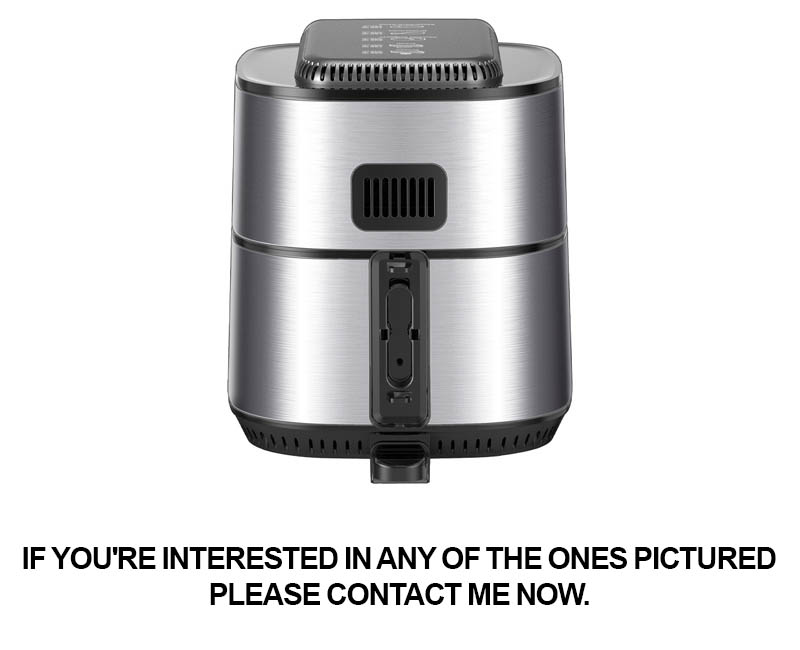
In the bustling world of commercial air fryers, our clients have shared a wealth of insights about our products. From small cafes to large restaurants, their feedback has been invaluable in shaping our offerings. Here’s a glimpse into what they have to say:
Our clients often highlight the ease of use as a standout feature. The intuitive controls and straightforward operation make it a breeze to switch between various cooking modes and temperatures. “I was worried about the learning curve, but it took me all of five minutes to master,” commented Sarah, the chef at The Green Bistro. The consistency in cooking results has also been a frequent point of praise. “No matter how many batches I cook, the quality remains top-notch,” says Mark, the owner of a busy diner.
Energy efficiency is another area where our air fryers have impressed. “Compared to traditional fryers, we’ve seen a significant drop in our energy bills,” remarks Emily, who runs a sports bar. The compact size of our commercial air fryers has also been a hit. “It fits perfectly in our limited kitchen space, and it doesn’t take up as much counter space as I expected,” notes Tom, the chef at a trendy café.
Durability and reliability are key factors that have won over many of our clients. “The build quality is solid; it feels like it’s going to last for years,” says Joe, the manager of a fast-food chain. The longevity of our products has translated into long-term savings for businesses. “We’ve had our unit for over two years now, and it’s still going strong,” adds Lisa, the owner of a local pizzeria.
Health and safety concerns are paramount in the food industry, and our air fryers have been well-received for their contribution to these aspects. “The air frying process reduces the need for oil, which is great for our health-conscious customers,” explains David, the chef at a health-focused restaurant. The absence of hot surfaces has also made our units safer to use. “Employees can safely load and unload food without the risk of burns,” says Rachel, the kitchen manager at a family restaurant.
Customization is another aspect that clients have appreciated. “We were able to get a model that fits our specific needs, with adjustable temperature controls and a timer function,” shares Michael, the owner of a catering business. The versatility of our air fryers has allowed businesses to diversify their menu offerings. “We’ve been able to experiment with new recipes that wouldn’t have been possible with a traditional fryer,” says Jessica, the chef at a gourmet food truck.
Service and support have been consistently praised by our clients. “The customer service team is always quick to respond and provide solutions to any issues we encounter,” notes Alex, the manager of a hotel kitchen. The training sessions offered by our team have also been beneficial. “The training was thorough, and our staff is now confident in using the air fryers efficiently,” adds Benjamin, the chef at a corporate cafeteria.
Our clients have also shared their satisfaction with the after-sales service. “When we had a minor issue, the factory dispatched a technician to resolve it on-site,” says Sarah, the chef at a school canteen. The commitment to customer satisfaction has not gone unnoticed. “We feel like we’re part of a community that values our success as much as our own business does,” comments Mark, the owner of a sports bar.
In summary, the feedback from our clients has been overwhelmingly positive. The ease of use, energy efficiency, durability, health benefits, customization options, and excellent customer service have all contributed to the success of our commercial air fryers. As we continue to innovate and improve our products, we listen closely to the voices of our clients, ensuring that their needs and preferences are at the forefront of our design and development process.
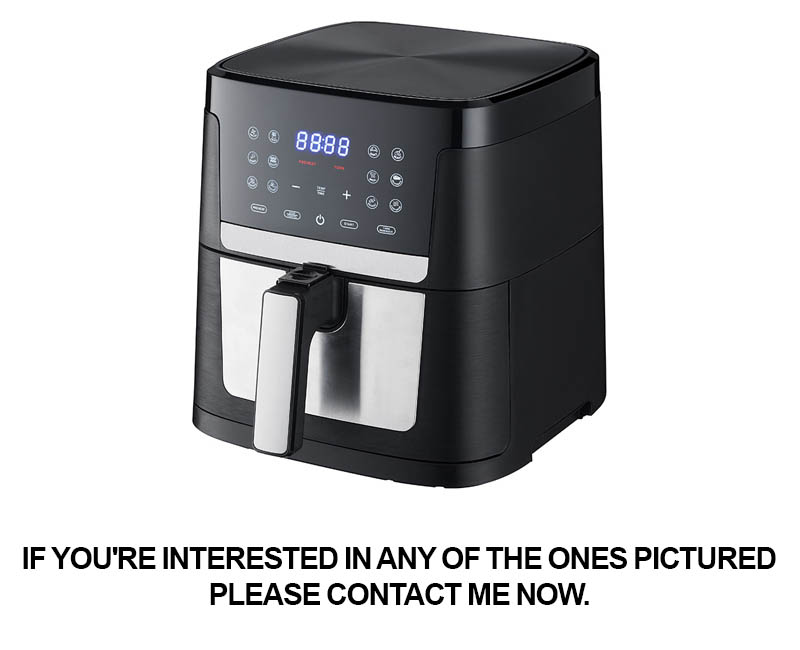
The commercial air fryer industry is on the brink of a new era, with innovative technologies and consumer preferences shaping the future. From smart features to energy efficiency, here are some of the key trends that are poised to revolutionize the market:
In the heart of our product development, we’re seeing a growing emphasis on connectivity. Users are now looking for air fryers that can be controlled remotely through smartphones, allowing them to start or monitor cooking sessions while away from the kitchen. This integration of smart technology isn’t just about convenience; it’s about providing a seamless experience that reflects the evolving digital lifestyle.
Energy efficiency has always been a cornerstone of our design philosophy, but it’s becoming more critical as sustainability gains traction. Our latest models are engineered to consume less power while maintaining high performance, which is a win for both the environment and our customers’ utility bills. We’re also exploring the use of renewable energy sources in our manufacturing process to reduce our carbon footprint.
Health and wellness are at the forefront of consumer concerns, and our air fryers are responding by offering healthier cooking alternatives. The technology not only reduces the need for oil but also allows for the preparation of a wide variety of foods, from crispy fries to juicy chicken, without compromising on taste. We’re investing in research to develop new cooking modes that cater to specific dietary needs, such as low-carb and gluten-free options.
Safety is another area where we’re seeing significant advancements. Our air fryers come with features like automatic shut-off and overheat protection to prevent accidents. We’re also integrating safety alerts into our smart models, so users can be notified if something goes wrong. These features are not only peace-of-mind solutions but also a testament to our commitment to product excellence.
Customization is becoming a key driver in the air fryer market. Consumers are looking for products that can be tailored to their specific preferences, whether it’s through adjustable cooking temperatures, timer settings, or even the ability to create their own cooking programs. We’re working on developing air fryers with customizable interfaces and programmable settings, giving users full control over their cooking experience.
The rise of eco-conscious consumers has also influenced our design choices. We’re focusing on using sustainable materials for our appliances, from recyclable plastics to long-lasting components. Our commitment to sustainability extends to our packaging, which is designed to be minimalistic and fully recyclable, reducing waste and environmental impact.
In the realm of aesthetics, we’re exploring new materials and finishes that not only enhance the visual appeal of our air fryers but also ensure durability and ease of cleaning. We understand that the kitchen is not just a place for cooking but also a space where style meets functionality.
The commercial air fryer industry is also witnessing a shift towards healthier foodservice options. Restaurants and cafes are embracing air frying as a way to offer patrons healthier alternatives to fried foods. We’re collaborating with these businesses to develop commercial-grade air fryers that can handle high volumes and demanding cooking schedules, while still maintaining the integrity of the food.
The future of commercial air fryers is not just about technological advancements; it’s about how these advancements can be leveraged to create a more sustainable, efficient, and user-friendly product. We’re continuously gathering insights from our customers and the market to stay ahead of the curve, ensuring that our products are not just meeting expectations but setting new standards in the industry. As we anticipate the next wave of innovations, we’re excited about the possibilities and the positive impact they will have on cooking and dining experiences worldwide.